Thrush is the common name for a yeast infection caused by an overgrowth of Candida albicans (Candida), a type of fungus. Candida generally live on our bodies without causing a problem but sometimes a baby can get thrush inside his mouth (seen as white patches that don’t wipe away), or in his nappy area (an inflamed nappy rash). It has been assumed for a long time that a breastfeeding mother can get thrush on her nipples causing pain and soreness. However, pain and soreness are also seen when a baby is not attached to the breast correctly, or a mother has dermatitis, eczema or vasospasm of the nipple—making diagnosis difficult. Several authors question the scientific rationale for thrush on nipples and there is increasing controversy over whether the condition exists.123456
This article
This article looks at the symptoms, causes, and treatments traditionally associated with a diagnosis of thrush on nipples and considers other possibilities to explain thrush like symptoms.
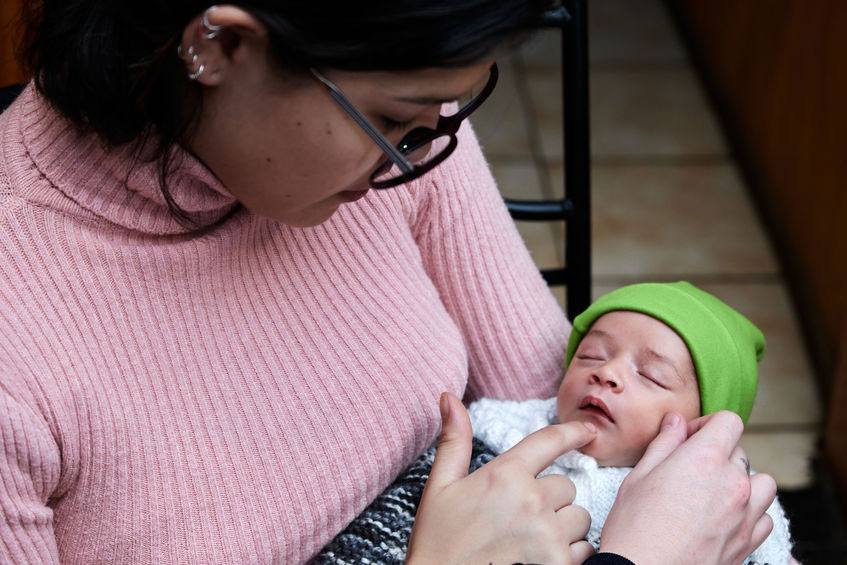
Symptoms of thrush
Symptoms for mother
The following list includes symptoms that have commonly been attributed to thrush on nipples. Note that these symptoms are also associated with other causes of sore nipples (see below; “Not thrush? Alternative explanations”).
- Itching or burning nipple pain that continues after/between breastfeeds, sometimes with deeper breast pain which may be stabbing or burning.78910
- Usually affects both nipples because the baby is thought to transfer the infection from one nipple to the other (Amir et al, 2022).
- Nipples may feel very sore and sensitive to touch and nipple skin and areolae may appear deep pink (in lighter skin tones), flaky or shiny (ABM Protocol #26, 2016). There may not be any visible symptoms especially on darker skin tones. White patches similar to oral thrush or tiny blisters are also said to be possible.1112
- There may be a loss of colour/skin discolouration in the nipple or areola (Wilson-Clay and Hoover, 2022. p67)
- Sudden onset of symptoms. Thrush is thought more likely if pain continues even after latching and positioning help from a breastfeeding specialist, or if nipple soreness develops after months of pain free breastfeeding (Amir et al, 2021).
Symptoms for baby
- Babies may have white patches of fungal growth inside their cheeks, or on their gums or tongue which don’t rub off. This may make a baby’s mouth sore so they may find feeding painful and appear fussy. Note that a white, milky coating just on a baby’s tongue is not necessarily thrush since thrush will quickly spread to lips, gums, inside the cheeks and the roof of baby’s mouth. A white tongue may be due to the presence of breast milk, infant formula or skin cells. Viral infections may also coat the tongue or change the appearance inside the mouth for example herpes infections (Wilson-Clay and Hoover, 2022. p67).
- Baby may have a sore bottom and nappy rash. Note that a sore bottom and nappy rash can also be associated with a dietary intolerance see Milk Allergy in Babies.
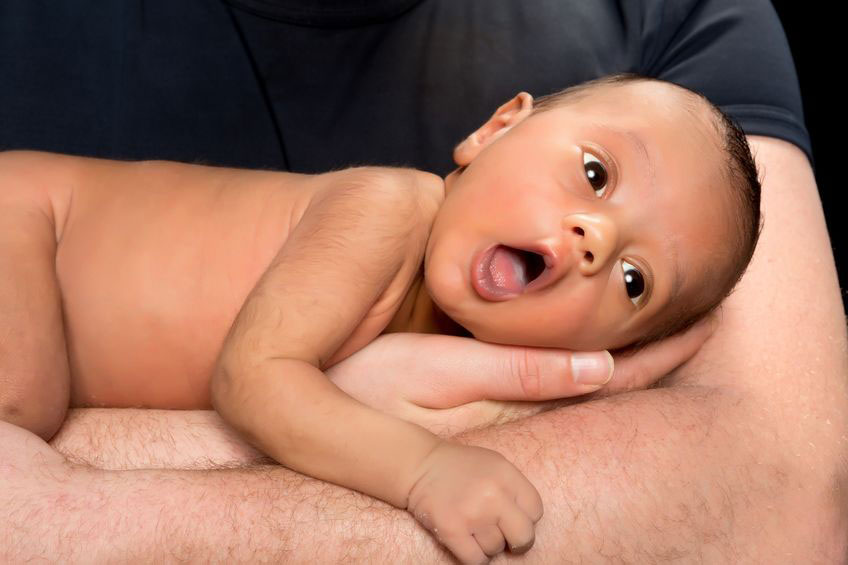
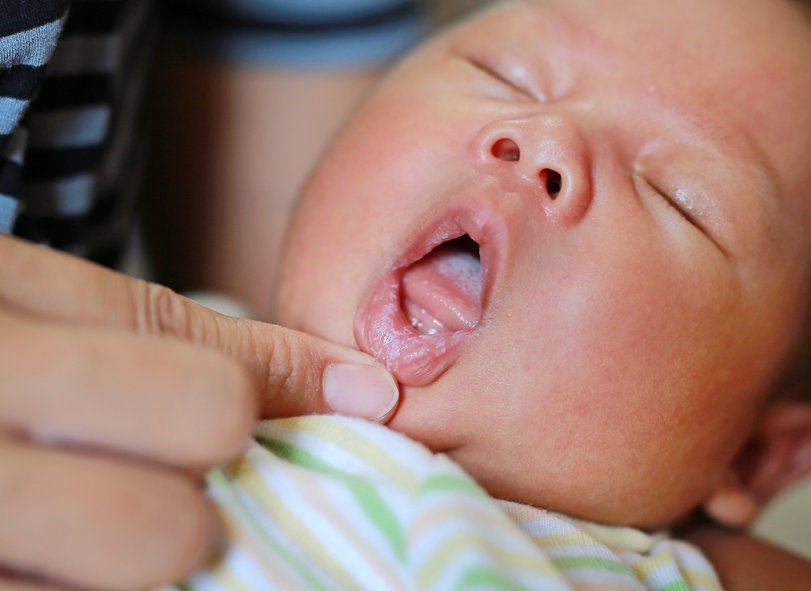
Not thrush? Alternative explanations
The symptoms of thrush listed above are the same familiar symptoms seen with other causes of sore nipples. Several authors believe thrush has been over diagnosed or misdiagnosed for a long time.13 Alternative explanations for nipple and breast pain include:
- Poor positioning and attachment at the breast—can cause burning nipple pain and soreness, friction blisters and milk blisters (blebs), deep breast pain (mammary constriction syndrome) or lead to breast engorgement and inflammation. The nipple and breast have a rich nerve supply making them very sensitive to pain. If a mother’s nipples are flattened or a different shape after a breastfeed this is a much more likely cause of soreness than an infection. Deep breast pain is not thought to be an indication that Candida has overgrown in the milk ducts within the breast to cause “ductal thrush”.1415
- Expressing milk with a breast pump can cause pink, sore nipples if the pump flange is not the right size for your nipple or the pump suction is too high. For information on using pumps see How to Increase Milk Supply When Pumping.
- Differences in anatomy such as a baby with a tongue-tie or a mother with flat or inverted nipples can make attachment more difficult resulting in sore nipples.
- Eczema, dermatitis or psoriasis on the nipple and areola can cause itching, burning and a red or crusty appearance.1617
- Allergic reactions can cause sore nipples or dermatitis. For example a mother may have a reaction to a topical ointment used on her nipples eg lanolin, an antifungal or antibacterial cream. A mother may also react to an antifungal medication used inside a breastfed baby’s mouth or to traces of a food that a weaning baby is eating if the mother is sensitive to that food (Mitchell, 2025).
- Vasospasm of the nipple (constriction of blood vessels in the nipple which can be due to baby pinching and distorting the nipple)—may cause burning nipple pain and/or colour changes of the nipple and may also be associated with Raynaud’s Syndrome. Some medications for thrush could make nipple vasospasm worse (see below). Damaged nipples that are healing from a poor latch may feel itchy or experience nipple vasospasm due to the injury (Thomas, 2013)
- Loss of colour or a darkening of skin can be associated with inflammation and dry or flaky skin or a fine white rash can be symptoms of dermatitis or eczema (Mitchell, 2025).
- A bacterial infection causes similar symptoms particularly if there is obvious nipple damage and is usually a more likely culprit than yeast, see next section (Amir et al, 2013; Thomas, 2013).
The articles Causes of Sore Nipples and Why Does Breastfeeding Hurt? have more information. An IBCLC lactation consultant can help rule out attachment and positioning as a cause of painful nipples and your health professional will advise whether a skin condition, allergy or infection could be present.
Thrush or subacute mastitis?
Another hypothesis for thrush like symptoms by Jiménez et al is that specific strains of bacteria overgrow in the breast causing inflammation in the ductal system but without causing the typical mastitis symptoms associated with bacterial infection.18 Some researchers call this condition subacute mastitis or dysbiosis and while the idea has gained support in some circles1920 others say the theory is not supported by evidence.2122
To swab or not to swab
In the study by Jiménez et al taking swabs from nipples or culturing samples of breast milk did not show an association between typical thrush symptoms and the presence of yeast. Both Candida species and Staphylococcus (a bacteria associated with mastitis) can be found on normal healthy skin. Amir et al says consider skin swabs for persistent infection to rule out methicillin-resistant Staphylococcus aureus (MRSA) or Herpes simplex (Amir et al, 2024).
Are there any risk factors for thrush?
The ideal conditions historically assumed to be a risk factor for thrush overgrowth on nipples included cracked, damaged or sore nipples.23 This correlates with poor positioning and nerve pain from damaged skin being more likely root causes of nipple pain rather than a fungal infection in many cases. Other risk factors cited relate to general susceptibility to thrush infections in the body such as low resistance to infection or use of antibiotics or corticosteroids24, having diabetes25, and taking oral contraceptives.26
Many references state that if a mother or a family member has an existing topical fungal infection such as vaginal thrush, athlete’s foot, nappy rash, jock itch, ringworm or even a fungal infection in a family pet these are risk factors for nipple thrush (Wilson-Clay and Hoover, 2022. p67). However Dr Katrina Mitchell states that thrush is not contagious and such a route for infection is not possible (see below) (Mitchell, 2025).
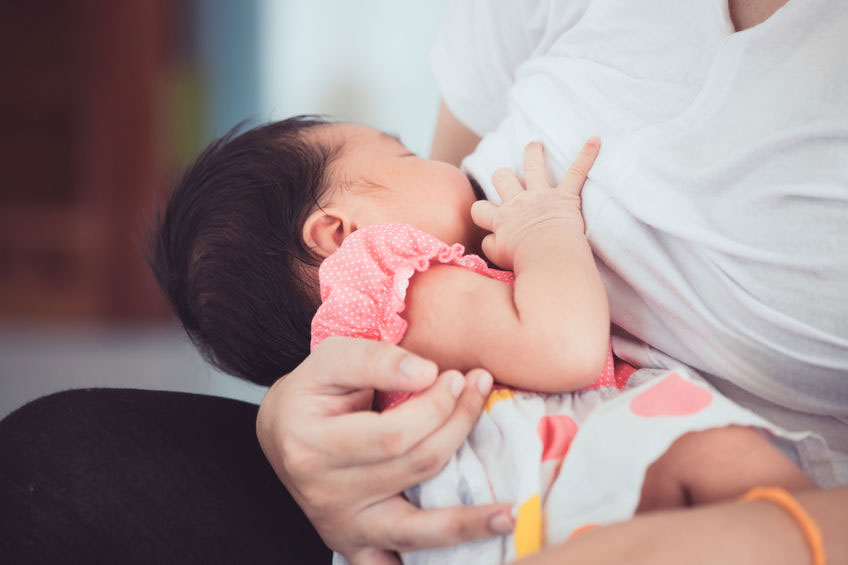
Thrush treatments
Antifungal treatments
Experts fear that many cases of thrush have been wrongly diagnosed causing unnecessary treatments, and point out that prolonged courses of medication are not appropriate (Douglas, Vol 18: 1–29 2022). Dr Pamela Douglas says antifungal treatment is rarely indicated and both topical and oral antifungal medications may disrupt the protective microbiomes of the baby’s mouth and the mother’s nipple (Douglas, Volume 17: 1–10. 2021).
Most breastfeeding resources discuss how a mother and baby can pass a thrush infection back and forth between them and therefore both should be treated at the same time.2728 However others say there is no data to support this thinking (Thomas, 2013), or that thrush is not contagious (Mitchell, 2025) and there is no reason to treat a baby’s mouth unless there are obvious signs of fungal growth (Douglas, Vol 18: 1–29 2022).
Official guidance
Places with guidance on medications for thrush treatments to discuss with a mother’s doctor include:
#1 National Institute for Health and Care Excellence (NICE)
NICE guidelines 2022 recommend topical miconazole 2% (an anti fungal medication) and hydrocortisone 1% (a steroid medication) if there is severe inflammation.29
#2 International Breastfeeding Centre (Dr Jack Newman)
Jack Newman, a Canadian paediatrician, recommends a similar combination treatment in his Candida protocol below. Dr Newman uses All-Purpose Nipple Ointment (a compounded topical ointment with antibiotic (mupirocin 2% ointment), antifungal (miconazole powder ) and anti-inflammatory (Betamethasone 0.1% ointment)) ingredients.30 See Treatments for Sore Nipples for more information on APNO as some authors have concerns about its use.
Treatment for babies and children
For suggested treatment of oral thrush in babies and children from birth to 15 yrs, refer to Treatment of Oral Candida in Children (NICE, revised 2023). Pharmacist Wendy Jones discusses oral thrush treatments for babies in her 2018 discussion video: Breastfeeding and Thrush (jump to 14 minutes 56 seconds).
Cautions on fluconazole
The prescription antifungal drug fluconazole is sometimes recommended for the mother when her symptoms persist despite topical treatments however some authors say it should not be used (Mitchell, 2025). NICE guidelines What are the contraindications and cautions for oral fluconazole? state that high or repeated doses of fluconazole should not be given to breastfeeding women. Pharmacist Wendy Jones explains that fluconazole has a long half life (88 hours) in babies under six weeks of age and daily treatment of the mother could accumulate to undesirable levels in the younger baby via breast milk ingestion.31 Fluconazole can also be associated with worsening vasospasm symptoms.32 For more information about fluconazole during lactation see Lactmed, Halesmeds.com [paywall] and e-Lactancia and discuss treatment options with your health care provider.
Non medical treatment options
Non medical treatment options for thrush have historically included the following ideas:
- Check the latch. If breastfeeding is painful this can be a cause of sore nipples/nipple thrush.
- Keep nipples dry. Wambach and Spencer recommend air drying nipples and if possible expose them to the sun for a few minutes twice a day, change breast pads often/as soon as they become wet, and wear 100% cotton bras (Wambach and Spencer, 2021).
- Eat healthily. Avoid sugary food and drinks, grains (including wheat products such as bread, cake, biscuits and cereals) artificial sweeteners, caffeine, alcohol, processed foods and dairy products. There are lots of suggestions for antifungal foods to boost your immune system online.
- Probiotic bacteria such as Lactobacillus acidophilus may help reestablish a normal flora 33 so that mother will be resistant to infection. Some brands of natural yoghurt contain probiotics and Wambach and Spencer discuss taking acidophilus daily (found at health food stores) and for two weeks beyond the disappearance of symptoms (Wambach and Spencer, 2021). See Mastitis Symptoms and Treatment for more information on probiotics.
- Virgin coconut oil. A natural treatment that has helped some mothers is topical virgin coconut oil on the nipples. Virgin coconut oil has antibacterial, antifungal, anti-inflammatory and pain relieving properties.3435363738
- Soaking or bathing in diluted solutions of baking soda or vinegar are said to be traditional cures for mild topical fungal infections (Wilson-Clay and Hoover. 2022. p66).
Dr Katrina Mitchell dismisses previous ideas to observe careful hygiene in the home to avoid infection from thrush between family members, especially mother and baby, stating that thrush is not contagious:
When infants undergo thrush treatment, mothers do not need to undergo antifungal treatment themselves. Pump parts, infant toys, and other household items do not need to be sterilized; in fact, harsh detergents may worsen allergy, which is often at the root of mom’s symptomatology. Many people ask why they temporarily improve after anti-fungal treatment. This is related to the anti-inflammatory effect some people obtain from anti-fungals. However, the improvement is almost always not definitive and moms will return for repeat treatment or seek alternative interventions.
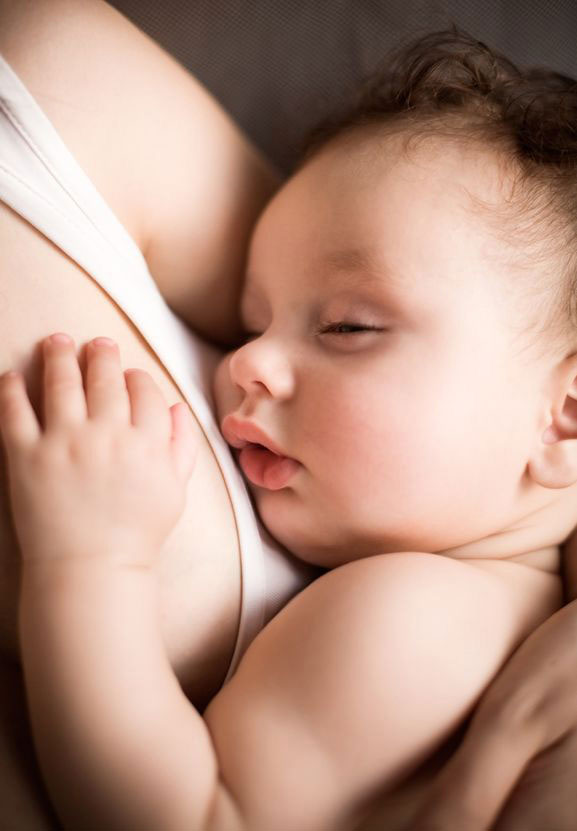
Persistent thrush, NOT thrush?
If the medications suggested in the above protocols—or alternatives recommended by your health professional—do not work, consider that the cause of your sore nipples may not be thrush after all.
If thrush doesn't resolve with treatment, perhaps it isn't thrush!Click To TweetCan I store breast milk during a thrush episode?
Although freezing Candida may not kill yeast, there isn’t any evidence to suggest breast milk stored during a thrush outbreak could cause reinfection later.39 The Academy of Breastfeeding Medicine’s protocol says:
If a mother has breast or nipple pain from what is considered to be a bacterial or yeast infection, there is no evidence that her stored expressed milk needs to be discarded.
If parents are still concerned about possible reinfection, they could heat any milk stored during the infection period to temperatures that will kill yeast (Mohrbacher 2020). Yeast will be killed by pasteurisation (62.5ºC or 144.5ºF for 30 minutes) (Wambach and Spencer, 2020; Mohrbacher, 2020) but also within minutes at temperatures above 50ºC or 122ºF.4041
Summary
Thrush is a fungal infection that has been linked with causing painful sore nipples in breastfeeding mothers. The symptoms are very similar to those caused by a poor latch, nipple vasospasm, nipple eczema, dermatitis or a bacterial infection of the nipple making accurate diagnosis difficult. Many authors question the scientific rationale behind a thrush infection on nipples and believe that other causes of sore nipples are more likely. Your IBCLC lactation consultant can help you identify whether there are other causes for your painful nipples such as poor positioning or attachment, and your health professional will advise whether a skin condition or bacterial infection could be present. Treatment protocols historically included careful hygiene, dietary changes, natural remedies, topical antifungal creams and oral medications. However, if thrush doesn’t resolve with treatment, perhaps it isn’t thrush!